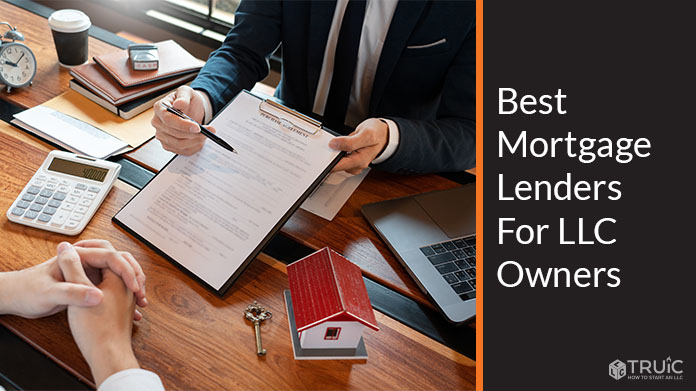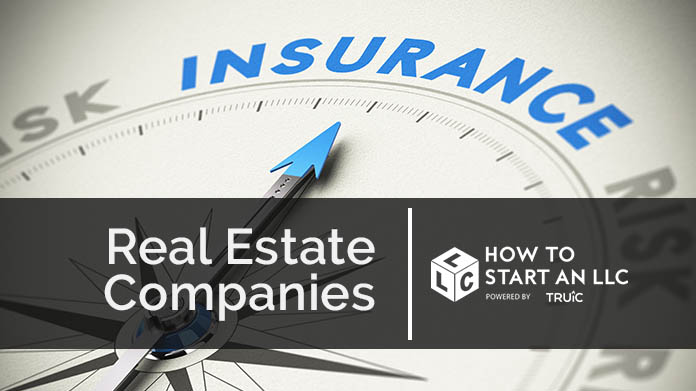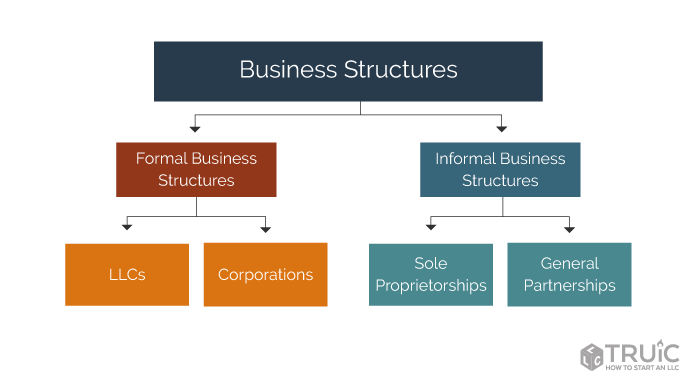How to Start a House Flipping Business
Starting a house flipping business is a great way to invest in real estate and put money in your pocket.
Use this guide to learn how to start a house flipping business in just 11 easy steps.
Recommended: Use ZenBusiness ($39 + State Fees) to form your real estate LLC for you.

What Is a House Flipping Business?
A house flipper buys distressed properties or real estate in need of renovation. These properties are also referred to as fixer-uppers. As a house flipping business owner, you’ll have to search for these types of homes, quickly renovate them, and sell them for profit or convert them into rental properties.
Getting Started
Buying and flipping houses, when done correctly, can yield a high return on investment compared to other real estate investments such as wholesaling. This type of real estate investing can supplement your current income or replace it entirely.
House flipping is a product-based business that requires an eye for detail and the dedication to improve a space on a budget.
Recommended: To read about the benefits of starting a house flipping business, read our top five reasons why you should start a house flipping business.
Step 1: Get in the Right Mindset
The first step to starting a house flipping business is to get in the right mindset to own and operate this type of business successfully. Here are a few tips to get your mindset on the right track:
Go in with the mindset to help people — Homeowners with damaged or distressed properties are most likely anxious to get the property sold. Your efficiency and reliability will help the sale of their property be stress-free and positive.
Dedicate yourself to making this business successful — Before starting this business, make sure you are dedicated to making it a success. A house flipping business requires knowledge, planning, and savvy to be successful, but more importantly, it requires your time and effort.
Understand the risks involved — Before any large investment, you should understand the risks involved, and real estate investments are no exception. Knowing the risk prior to investing allows you to make an informed decision and increases the likelihood of a successful flip.
Know your goals and stick to them — Establish a clear initial goal for starting this business and stick with it while also considering future objectives. To do this, total up your expenses (e.g., mortgages, car payments, extra spending money, etc.) and calculate how many houses you will need to flip to satisfy these goals. It is possible to turn house flipping into your sole income or as a supplement.
We recommend using foreclosure.com to find great deals on the most up-to-date, local, and low-cost (distressed, tax liens, etc.) investment properties that would be otherwise difficult to find. With a database that updates twice a day, you can quickly secure your next real estate investment deal and create new opportunities for your business.
Step 2: Start Planning Your House Flipping Business
Setting up your house flipping business can be done in a few simple steps — building the foundation for your business to operate smoothly.
Choose a Business Structure
The first step to setting up any business is choosing a business structure. The most common business structures are sole proprietorship, partnership, limited liability company (LLC), and corporation. Your business structure informs how your business is taxed, set up, and operated.
Each of these structures suits different business needs, such as whether or not the business needs liability protection or to attract investors and whether the business needs to maintain a complex structure such as a corporation.
Generally, we recommend forming an LLC for most businesses. This business structure is easy to start and maintain, making it suitable for new and experienced business owners alike.
Once you open an LLC, consider an S Corp tax status for your real estate LLC. As an IRS tax classification, an S corp can provide your real estate business with certain tax benefits. You can find out more if an S corporation is right for you with our LLC vs S Corp guide.
Protect Your Corporate Veil
Starting an LLC is a great first step to protect your business’s corporate veil; however, it isn’t enough for long-term maintenance. To adequately protect your corporate veil prioritize the following:
- Sourcing the adequate startup capital
- Setting up a bank account and credit card separate from the owner’s finances
- Signing documents using proper titles (i.e., John Smith, as Authorized Member of ABC LLC, for and on behalf of ABC LLC)
- Documenting meeting minutes, if required in your LLC’s operating agreement
- Filing an annual report, if required by your state
Create a Website
Even if you are just getting started, creating a website for your House Flipping business provides credibility and allows clients to easily access necessary information about your business.
Domain Name Search
We strongly recommend that you also check to see if your business name is available as a web domain (URL). Even if you don’t plan to create a business website today, you may want to buy the web address to prevent others from acquiring that domain name. It’s a free search.
Get a Logo
Every business should have a logo that is eye-catching and aligned with the business’s branding. Using our free logo maker, you can create a one-of-a-kind logo that suits your business’s needs.
Recommended: For everything you need to know about planning your new business, read a step-by-step breakdown in our Business Planning Guide.
Step 3: Fund Your Project
In order to start flipping houses, you’ll need funding. There are many ways to generate funding for your real estate investment if you don’t already have the initial capital required. Here are a few ways to fund your project:
Use your own money — Utilizing your own funds to buy and flip a house gives you the freedom to be your own boss and work at your own pace. However, it is a much bigger risk for a new house flipper than using a different method.
Combine your money with friends and family — To lessen the risk of using solely your own money, you can combine funds with friends and/or family. However, it is important to use an attorney to get terms in writing beforehand to avoid conflict.
Tap Into Your Additional Funds — If you have additional funding such as a 401k, Roth IRA, Home Equity Line of Credit, or savings, these can be used to finance your real estate investment.
Hard Money Loan — Essentially, a hard money loan is a cash loan compiled by a group of investors who allocate a manager to grow their investment following strict terms and conditions. The nature of a hard money loan is an expectation of a quick return on investment.
Private Money — Private money is a loan from a single private lender, not a combination of lenders. For example, if your family member has a large sum of money that they are willing to lend to you for the project. The terms and conditions of this loan vary depending on the agreement.
Traditional Mortgage — There are several types of traditional mortgages, including conventional, Federal Housing Assistance (FHA), FHA 203k, Veteran’s Assistance, and Rural Development. Each traditional mortgage variation can be applied based on your finances, employment background, and property location.
Get A Bank Loan — Since your business is new, it may be difficult to obtain a bank loan in the beginning though it is possible. However, the company owner will have to guarantee the loan personally, which makes this option risky.
If you’re trying to secure a business loan, you can learn more about how to build business credit, improve your business’s credit score, and apply for a business loan with our business guides.
Step 4: Get to Know Your Market
Getting to know your local market is an essential step to maximize profits and ensure an easy flip. Typically, it is ideal to look for potential properties in areas you already know well, such as your local community or within your state. This doesn’t mean you can’t look in other, unfamiliar areas of interest, but it will be a more difficult project.
Your aim should be to align opportunities with your financial goals by deciding what your ideal minimum return will be.
Example: If your goal is to make $40,000, you will want to invest in a property that is 40-60% of the after repair value (ARV) then factor in the repair costs, which you can budget around $40,000 for — though this will vary.
Therefore, if the ARV is $200,000, the ideal cost of the property to meet your financial goals would be between $80,000-$120,000.
Step 5: Find Properties
After you’ve established your financial goals, secured funding, and planned your business, you can start searching for houses to flip. There are various ways to find houses at a deep discount, but the best method will vary based on your area and the connections you can make within the community.
Here are a few options to start searching for potential properties:
- Hire a “bird dog,” otherwise known as someone that will forage for good property deals in exchange for a finders fee. A bird dog will supply the address, phone number, and seller name. Compensation is typically a flat fee or percentage of the sale at close.
- Purchase Through a Wholesaler. A real estate wholesaler is someone who finds and secures properties to transfer to other real estate investors for a commission. To find a wholesaler, network in your market via local meetups or go online to find wholesalers in your area.
- Find the property yourself. If you have the time to dedicate to your property search, you can begin looking in your city or town in a number of ways. To start, dedicate about three hours a week to “driving for dollars,” wherein you drive your local area searching for a number of distressed properties to inquire about or join a local Real Estate Investment Association (REIA).
- Use an investor-friendly realtor. This is a real estate agent that will understand your situation and help you to make a quick, easy sale. However, you will have to pay a fee for their services, which is typically around 4% of the sale.
Recommended: For more information about finding deep-discounted properties, read our tips to finding off-market properties in our guide to starting a real estate wholesaling business.
Step 6: Do a Walkthrough of the Property
The vetting process begins prior to even contacting the seller and involves researching three to six months of “sold comps” or sold comparables within a mile of the property. When researching sold comps in the area, you are looking for relatively similar properties to the subject property, including the following variables:
- Number of bedrooms
- Number of bathrooms
- Square footage
- The year the home was built
- The style of home (i.e., number of stories, split levels, or ranch style)
- Amount of acreage
Prior to doing a walkthrough of the property, draft an offer contract with your real estate attorney to bring with you. The goal of having this contract ready is not only to efficiently secure the property but also to establish a face-to-face connection wherein you are able to express your goals and intentions. Remember, buying a home is a personal experience — the impression you make during this phase is important to the success of the flip.
Step 7: Make The Offer
Making an offer to the homeowner involves several steps, including making contact, doing a walkthrough, and preparing a contract with a real estate attorney.
Contacting the Seller
Once you have evaluated the property, you can contact the seller and set an appointment. The goal of this call is to set up an appointment to meet them and walk through the property. Be sure to be as transparent as possible about your intentions and business model following these tips:
- Describe what you do (i.e., “I buy houses at a discount, repair them and sell them for a profit.”).
- Work to understand the current situation and show them empathy.
- Make it clear how this interaction will be mutually beneficial and develop creative solutions to meet the homeowner’s needs.
Viewing the Property
During your walkthrough of the property, you are looking to gather as much information about the property as possible to inform your offer and budgeting. This mainly pertains to deferred maintenance and any major issues, such as replacing air conditioning or plumbing.
Drafting an Offer Contract
If you haven’t already done so, have an offer contract created by a local real estate attorney before doing a walkthrough of the property. Once you have completed the viewing, you will be able to factor in rehabilitation costs, conditions, and contingencies prior to making an offer.
Here is what will inform your purchase price:
- The cost of selling a property, otherwise known as transactional costs are typically around $20,000, including the costs for realtors, discounts, staging, taxes, closing costs, and any other additional expense.
- The total cost of rehabilitating the home based on the detailed notes you took during your walkthrough.
- The condition of the home. This is the overall condition of the home rather than separate rehabilitation costs and informs the amount you will be able to sell the home for once repairs are finished.
- Contingencies are the terms made by either party prior to signing and closing the contract. Make sure to comply with all contingencies and finish them within the homeowner’s chosen timeframe.
After you have virtually or physically walked through, write up your offer, or have the contract ready — as seen in step five. Have all of your conditions and contingencies in the contract and make the offer the same day as you walk through the property.
Consider setting up a business phone line by using phone.com to protect your personal phone number and other information.
Recommended: For more information about drafting your offer contract, read our guide to how to draft a real estate offer contract.
Step 8: Offer Accepted
Once your offer is accepted, there are four steps to securing the property and beginning the flip: complete contingencies, select a title company, prepare your funding source, and close the deal.
- Complete any contingencies and conditions. The easiest way to stay organized during this stage is to create a spreadsheet for all time-sensitive due dates, such as property inspection and earnest money deposit.
Each time-sensitive contingency must be met unless an extension is allowed. Once each contingency is completed, it should be removed with the agreement for removal documented in writing. - Select a title company that is local to the subject property. The purpose of the title company is to verify the title is clear of all equitable interest, provide title insurance, manage escrow funds, and perform the closing/sale of the property. Introduce the seller to the title company in case additional information is required.
- Prepare your funding source by providing them with any required documentation. It is important to communicate with your funding source about details and updates about the sale.
- After you remove all contingencies, you can close the deal at the agreed closing date.
What is a “free and clear” title?
A title that is verified as “free and clear” by your Title Company is clear of any equitable interest meaning one sole, undisputed owner owns it; therefore, no other party can claim ownership of the property.
What is a “cloudy” title?
In real estate, a cloudy title is defined as an irregularity in the title that would cause a reasonable person to pause prior to accepting the transfer of the title.
What is a “marketable” title?
A marketable title is a property title that is considered so clear that any reasonable person would accept conveyance of the title.
Step 9: Immediately Begin Rehabilitating the Property
During the offer acceptance phase, bring in a contractor to assess your rehabilitation checklist and perform an inspection walkthrough. Once you close the deal, you can instruct the contractor to begin the rehabilitation.
The agreement with your contractor should be in writing and reviewed by your attorney. This agreement should have the details of how funds will be dispensed as well as the ideal timelines.
What is a Waiver of Liens?
A Waiver of Liens is a document that states the contractor will have no right to place any liens, otherwise known as a right to claim property or assets in order to satisfy a debt. Once the contractor is done and the final payment for their services is complete, they must sign this document.
Step 10: Place The Property For Sale
Finally, it’s time to place the property back on the market, complete with your repairs and upgrades. You can either list the property as For Sale By Owner (FSBO) or use a real estate agent.
When deciding on a listing price, base it on your ideal return on investment (ROI). Before listing the property, know your walk-away number and your break-even number.
This process incorporates similar elements to the buying process. Here are the steps you will take to sell the property:
- Receive an offer
- Accept the offer
- Complete any contingencies
- Remove all completed contingencies
- Send documents to the title company for processing and escrow
- Close the deal on the agreed closing date
If you’re interested in becoming a real estate agent, make sure to check out our real estate licensing guide.
Step 11: Get Paid
The final and likely to be your favorite step of the process — getting paid! This step will look different depending on how you funded your investment. If you have a funding source, this will be the stage you will pay the amount owed.
Next, you can use your profit to reinvest into another property and repeat the process!
Frequently Asked Questions
Ideally, it should take about four to six months to flip a house, including purchasing, rehabilitating, and selling the property. Keep in mind, every rehabilitation’s timeline will vary from property to property.
If you don’t have the capital to invest in house flipping, you can look for funding in many other ways such as private lenders, bank loans, and hard money loans.
This is dependent on your time, location, and available capital. However, full-time house flippers complete 2-7 house flips per year on average. Every state is different, however, so check with your state government for rules and regulations.
Example: In Michigan, if you sell more than five houses in a year, it is considered practicing real estate without a license. Therefore, you could be subject to penalties.





